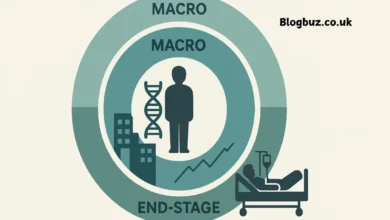How Virtual Medical Scribes and Medical Transcription Improve Doctor Patient Communication?

In a sensitive sector like healthcare, every small detail counts. Any miscommunication or poorly conveyed information can have a lasting impact on patient health. Effective doctor patient communication is the key to unlocking positive health outcomes.
Be it critical listening or proper recording tools, there are plenty of options to ensure seamless documentation of doctor patient communication. This blog by ScribeMedics outlines the importance of medical transcription services and virtual scribes in capturing even minor health-related details to maximize the impact of the treatment process in the United States of America.
The Doctor Patient Communication Challenges in Modern Healthcare
Effective communication between the patient and provider is essential to ensure accuracy in diagnosis and treatment planning. There are some key challenges:
1. Time Constraints
As the average consultation time is low, especially for elderly people with co-morbidities or individuals dealing with complex illnesses, the patients often feel unheard. As clinicians are overwhelmed with administrative tasks, they cannot devote more time to patient care. Hence, the limited time duration leaves less scope to delve into more detail, ensuring higher levels of accuracy.
2. Increased Screen-time
With the clinicians dealing with increased documentation tasks, they have to spend more time looking at the screens and updating electronic health records. Similarly, when they are examining the patients, their attention is divided between the screen and the patient. Hence, they are unable to actively listen and process the information for a better output.
3. Health Literacy Disparities
Poor health literacy is a major problem. It affects doctor patient communication to a great extent as the individuals find it hard to understand medical jargon. With a lack of knowledge about complex medical terms, patients do not have a clear understanding. Hence, they end up giving wrong information.
4. Language Barriers
Cultural and linguistic barriers are responsible for affecting the doctor patient communication. In this era of globalization, doctors often meet patients who do not understand the native language or know English well. This may result in a misunderstanding and the generation of wrong data. This is more common among patients who are not native English speakers.
5. Telemedicine Limitations
With a rise in telehealth services, it is evident that exam room consultations are likely to take a backseat for non-emergencies. However, besides a strong internet connection, one needs to be technologically sound to book and be part of a virtual consultation. Elderly patients are not well aware of new technological advancements. Hence, there are higher chances of misinformation. Also, misdiagnosis is more common because physicians cannot read the nonverbal cues.
6. Clinician Burnout
Administrative burden in the health industry is a key reason behind clinician burnout. A burned-out healthcare professional is prone to poor attentiveness and has lower productivity. This may cause them to misinterpret the doctor patient communication. Thereby, documentation errors and missed information become more common. ScribeMedics, one of the top medical scribe companies, can reduce administrative burden and prevent physician burnout.
7. Misinformation From the Internet
With easily available online data, patients are self-diagnosing their conditions. When they experience any symptom, they are more likely to search for it on the internet and use that vague data to decode their problem. Therefore, when they visit a physician, they are so focused on explaining their online research that they divert from their symptoms and real issues. This results in misinformation.
What Is Medical Transcription?
Medical transcription is a process where the doctor patient communication in a healthcare setting is recorded and turned into written notes. The transcriptionist is provided with the audio recording of the encounter and then converts it into clinical data. This helps physicians to deal with the rising administrative burden so that they can focus more on patients.
This service is ideal for small medical practices that deal with a lower patient count and have a smaller budget. The transcriptionist will work on a pre-recorded audio clip and update the records accordingly. As there is no scope for real-time documentation or direct communication with the provider, there are chances of errors. This traditional practice was there for a long time before the introduction of scribes.
Understanding Virtual Medical Scribes
Medical scribe services help doctors deal with their administrative burden. A virtual scribe listens to the doctor patient communication in real-time and updates the electronic health records accordingly. They are not present in the exam room and provide documentation support from a remote location. Virtual medical scribes are flexible and can provide solutions to multiple providers across geographical borders and various time zones.
A remote scribe focuses on enhancing the quality of documentation and maintaining higher levels of accuracy. Thus, error-free documentation streamlines the coding and billing process as well. Hence, virtual scribes help to maintain the overall accuracy of the health operations and reduce insurance claim denials. These scribes can provide services around the clock for higher levels of outcomes.
Benefits Of Adopting Medical Transcription & Virtual Scribe Services
There are several advantages of choosing medical transcription and medical virtual scribe in the USA.
1. Restoration of Patient-Provider Connection
With the transcriptionists and virtual scribes taking over the administrative tasks, it frees up a lot of time for the physicians. Therefore, they can spend more time on patient care. As the direct engagement rate increases, so do the patient satisfaction levels. It helps to restore the bond of trust between the clinicians and patients.
2. Clinician Burnout Prevention
As medical transcription and remote medical scribe services are aimed at reducing documentation workload, they relieve doctors from administrative burden. They no longer have to work after hours just to complete the charting. With less screen time, they get a healthy work-life balance. Hence, the number of burned-out healthcare professionals in the United States decreases, improving overall patient outcomes.
3. Documentation Improvements
As transcriptionists convert audio recordings into clinical text, and a medical scribe online provides real-time documentation, both upgrades the quality of patient records. Properly updated Electronic Health Records (EHRs) result in accurate diagnoses and interventions. In addition to this, error-free documentation leads to fewer claim denials. Hence, the overall healthcare burden lowers.
4. Productivity and Revenue Boost
Outsourced medical transcription and virtual scribing services free up clinicians’ time. With a healthy work-life balance, they become more productive at work. This leads to more consultations and fewer instances of delayed care. As the doctors spend more time with patients, there are increased appointments, leading to maximized revenue.
5. Patient Satisfaction Enhancement
With reduced wait time and increased direct engagement with the provider, there is higher efficiency in doctor patient communication. This leads to faster diagnosis and early intervention. As the recovery time decreases, patient satisfaction levels rise. This makes a huge impact on the health industry and boosts operational efficiency.
6. Equity and Compliance Support
When physicians opt for virtual scribes or medical transcription services, they sign up for higher efficiency. From linguistic barriers to speech issues, these services can help to rise beyond these and provide error-free documentation. ScribeMedics follows HIPAA-compliant practices to ensure overall compliance with relevant guidelines. Hence, clinicians get full support with equity and compliance. This helps to avoid penalties and legal complexities.
How AI-Powered Scribes Are Making A Difference in Doctor Patient Communication
Artificial intelligence (AI) has become the new normal at present time. Most of the industries have integrated AI into their workflow to boost revenue and work efficiency. The Healthcare sector is no exception. AI-powered tools are streamlining the documentation tasks to ensure the physicians are not burdened with paperwork.
Scribe AI automates documentation for faster operations. AI captures the doctor patient communication in real-time and helps physicians manage bulk paperwork. As artificial intelligence speeds up the administrative tasks, it ensures EHRs are updated quickly, resulting in quicker recommendations for specialized care. This not only reduces turnaround time but also results in better continuity of care.
However, it is important to understand that AI-powered scribes are not completely error-free. There is still a requirement for human oversight to ensure the overall accuracy of the documentation. ScribeMedics’ hybrid AI medical scribe model is the first of its kind. This is a revolutionary combination of human brain and AI speed, focused on improving the quality of documentation.
Overcoming Challenges in Doctor Patient Communication
When it comes to healthcare communication, it is a key aspect to ensure quality care delivery. Medical transcription and virtual scribes can help in this context. There are a few ways through which one can overcome the challenges in doctor patient communication.
- Clinicians may miss one detail, but virtual scribes will not. They are focused on every detail and provide real-time documentation. They can ask for clarity in case of any data ambiguity. Medical transcriptionists can also listen to the audio recording to ensure each detail is in place.
- The direct engagement rate increases as the physicians have less paperwork to deal with. With increased eye contact with the patient and extended consultation time for complex health issues, the recovery phase is reduced.
- Healthcare staff must receive training on cultural aspects. This will reduce the barrier between them and the non-English speaking patients. Hence, the errors caused by linguistic or cultural differences will be reduced.
- Bridging health literacy gaps can help to eliminate miscommunication. With more awareness of medical jargon, patients will have a clear understanding. This will reduce errors caused by misinterpretation of data.
- Healthcare providers must improve the quality of telehealth service provision. There should be clear doctor patient communication despite the lack of physical presence. The use of advanced technologies can resolve this problem and enhance the patient experience.
Why Should You Consider ScribeMedics?
From medical transcription to virtual medical scribe services, ScribeMedics can help clinicians pay more attention to patient care and forget about administrative tasks. Our services are aimed at enhancing your quality of care delivery without breaking the bank!
ScribeMedics’ hybrid medical AI scribe model uses artificial intelligence to speed up bulk documentation work and human oversight to locate and eliminate errors. This model aims to streamline clinical workflow without interrupting the care continuum.
As one of the leading medical scribe companies, ScribeMedics takes pride in fostering a higher patient experience through integration with the latest technologies. AI automation and the human brain will work together to improve doctor patient communication and generate superior health outcomes.
Conclusion
The world is changing, and so is the health industry. With the rise of online scribe services and medical transcription, physicians now have more options to explore. The goal is to free up more time for patient consultations.
Doctors are not data entry clerks. Hence, the administrative tasks can be handed over to someone who is not directly involved with patient care. This careful division of work will help to reduce the long queues in the ERs and foster a better quality of care. Choose ScribeMedics and get HIPAA-compliant medical transcription and virtual scribing solutions.
Frequently Asked Questions
1. How to improve communication between patient and doctor?
When it comes to positive health outcomes, doctor patient communication plays a pivotal role in it. Whether it is a clinic visit or a virtual consultation, the goal is to ensure all the information shared is documented correctly to ensure proper updation of the electronic health records (EHRs). Even the smallest details shared by the patient can shift the course of treatment in the right direction.
It is essential to adopt certain steps to ensure better doctor patient communication. However, both parties need to be focused enough to make this happen. The doctors must ask clear and significant questions that compel the patients to share major to minor health updates. They should use active listening skills to ensure no information is skipped. Patients must refrain from sharing irrelevant information and focus on their health challenges only. Lastly, the physician should observe the body language of the patient for non-verbal cues.
2. Why is effective communication between doctor and patient important?
The doctor patient communication is the foundation of superior quality of care. From this point, the formation of clinical intervention starts. No foundation can stand tall if it is made on wrong information. This may lead to major issues like wrong diagnosis, inefficient care delivery, inaccurate documentation, incorrect codes, higher medical costs, longer recovery period, etc.
Sometimes, misinformation can turn minor health implications into life-threatening conditions. For the worst cases, wrong treatment may lead to death. Therefore, it is crucial to ensure the consultation draws accurate information from the patient that can be used for efficient care delivery. ScribeMedics, one of the best medical transcription companies, streamlines the administrative workload for clinicians.
3. Why is it important for doctors to communicate with patients?
Doctors are primarily responsible for the overall well-being of their patients. They talk to the patients, diagnose their underlying health conditions, provide them with a proper intervention plan, and follow up with them until they are fully recovered. Hence, doctor patient communication is an essential part as this is when the information-sharing takes place.
As the doctor communicates with the patient, either physically or virtually, they come across a lot of information that might help with the diagnosis. There is an advantage during clinic visits, as the providers can physically examine the patient to determine the underlying health challenges. They can also look for their body language for non-verbal cues to increase the overall accuracy of the treatment process.
4. How does having a virtual medical scribe benefit the patient?
During the patient-provider encounter, a virtual scribe uses a device to listen to the conversation from a remote setting. Although they are not physically present in the exam room, the consent of the patient is sought before proceeding. They listen to the conversation and conduct real-time documentation. They enquire about any vagueness or ambiguity to ensure only the correct information is used.
A virtual medical scribe helps the doctors with the documentation tasks so that they can solely focus on quality care delivery. A healthcare professional burdened with paperwork will experience burnout and low productivity. Hence, it will make an impact on the health sector. A virtual scribe enables the overall well-being of the doctors by taking care of the administrative tasks and preventing burnout. ScribeMedics, one of the top virtual medical scribe service providers in the USA, can efficiently capture doctor patient communication for better health outcomes.
5. What is the difference between virtual medical scribe and medical transcription?
While a virtual scribe and a medical transcriptionist both help the physician with administrative tasks, such as documentation, there is a key difference. In virtual scribing, the real-time data is recorded in the electronic health records as the scribe is adding information during the encounter. However, the transcriptionist listens to the audio recording after the visit is already over. Therefore, there is no scope for real-time documentation. Due to this, virtual medical scribe services have a faster turnaround time.
Medical transcription is ideal for clinicians for a lower documentation burden and budget. In the meantime, virtual medical scribe works best for clinicians dealing with tremendous burdens of paperwork and who do not have any budget constraints. While hospital setups may require a remote medical scribe, transcription will be the best choice for small practices in America.




